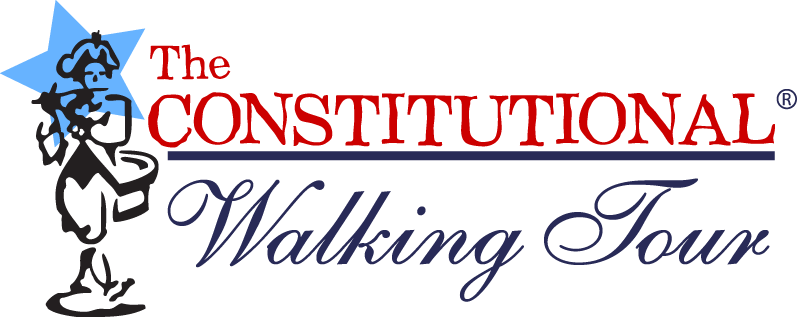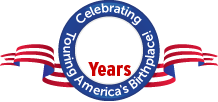Related Posts
- Buy Tickets for the June 8, 2019 LGBTQ History Tour
- Buy Tickets for The Constitutional Walking Tour of Philadelphia – See 20+ Sites on a Primary Overview of Independence Park, including the Liberty Bell and Independence Hall
- The Liberty Bell Visitor Guide
- The Liberty Bell History
- Independence Hall
LGBT History and Civil Rights Movement in Philadelphia: Meaningful Monuments, Murals and Markers
As America’s Birthplace, Philadelphia is the home to The Declaration of Independence, the Constitution of the United States and the Bill of Rights. It only seems fitting that the City of Philadelphia has also played key roles over the last fifty-plus years to the LGBTQ (lesbian, gay, bisexual, transgender, questioning) Civil Rights Movement. To that end, the City of Brotherly Love and Sisterly Affection was home to Barbara Gittings, the Mother of the LGBT Civil Rights Movement, and to Dr. John Fryer (aka Dr. Anonymous) who fought tirelessly to declassify homosexuality as a mental illness. Philly also hosted the first major LGBTQ rights demonstration that was held at Independence Hall on July 4, 1965, and the Annual Reminders on subsequent years on the Fourth of July. Additionally, the Liberty Bell has become a symbol of pride for various civil rights, including LGBTQ rights. Philadelphia lays claim to many milestones in the quest for LGBT civil rights, which collectively provided momentum for a national movement.
See the Philadelphia LGBTQ Heritage Initiative, which is a collaboration of the LGBTQ community, the National Park Service, the John J. Wilcox, Jr. LGBT Archives, Independence National Historical Park and the Organization of American Historians. For a more detailed historical account, see “Philly’s LGBT history: A primer on the city’s legacy of pride” published by Billy Penn.
1) Arch Street Friends Meeting House
320 Arch Street (Historic marker outside of the Meeting House)
Philadelphia, PA 19106

The Arch Street Friends Meeting House, home to the Society of Friends, was built in 1804 on land that William Penn gave to the Quakers in 1693. The Arch Street Friends Meeting House is the oldest Friends Meeting House still in use in Philadelphia, and the largest Quaker meeting house in the world. The Society of Friends, called Quakers by their critics, grew out of the teachings of George Fox in England, in the 17th Century. William Penn, a disciple of George Fox, founded Philadelphia as a haven for his persecuted co-religionists. William Penn’s “Holy Experiment” was to build a society according to the Quaker ideals of nonviolence, the equality of man and the absolute right of conscience.
In February 1979, about 300 LGBT activists gathered here to organize the first national demonstration of LGBT rights in Washington, D.C. On October 14, 1979, the National March on Washington for Lesbian and Gay Rights took place in Washington, D.C., and it attracted about 100,000 participants.

2) First LGBTQ Coffeehouse
60 N. 3rd Street
Philadelphia, PA 19106

In 1973, it was commonplace for landlords to discriminate against leasing property to LGBT tenants. However, at this site, Quaker landlords were defiant against this practice and rented the storefront at this location to the gay owner-operators of the city’s first LGBT coffeehouse. The shop was the unofficial predecessor to the William Way Community Center (see below), a safe space for the LGBT community to socialize. Today, the area is a vibrant destination with art galleries, shops, historic sites, BYOB restaurants, as well as Menagerie Coffee at 18 S. 3rd Street.
3) “Annual Reminders” at Independence Hall - Gay Rights Demonstrations on July 4, 1965; July 4, 1966; July 4, 1967, July 4, 1968 and July 4, 1969
6th & Chestnut Streets (Northwest corner is where the historical marker is located)
Philadelphia, PA 19106

Independence Hall, America’s Birthplace, was the location where the first major LGBT rights demonstration was held on July 4, 1965. Annual public demonstrations for gay and lesbian equality were held at Independence Hall on each Fourth of July through 1969, and collectively, these are referred to as “Annual Reminders.” The location of the march in front of Independence Hall was no accident since the protestors were following the footsteps of the abolitionists fighting to end slavery and the women suffragists calling for the right to vote who also protested at Independence Park.
These demonstrations provided structure, organization and a platform for what became an ongoing LGBT civil rights movement. To that end, these peaceful Annual Reminder protests in Philadelphia combined with the violent Stonewall Riots in New York City in 1969 as well as the nation’s first Gay Pride Parade which was held in New York City in 1970 transformed a small national campaign into a civil rights movement.

4) Liberty Bell Center
526 Market Street (GPS address)
6th & Market Street
Philadelphia, PA 19106
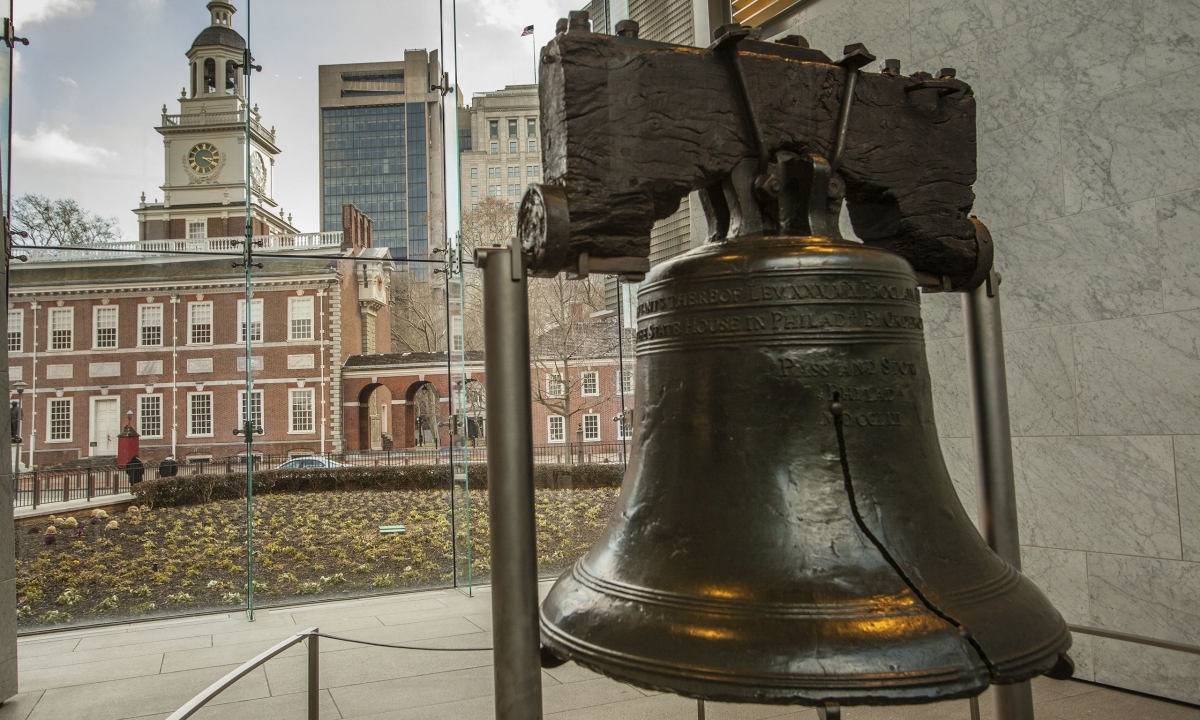
The Liberty Bell is the quintessential icon of American freedom, and it is one of the most visited historic sites in the United States. The Liberty Bell is housed inside of the Liberty Bell Center which spans almost an entire city block on 6th Street between Market and Chestnut Streets. The Liberty Bell can be seen from both inside and outside of the Liberty Bell Center. Inside the Liberty Bell Center are exhibits about the history of the Liberty Bell, including original artifacts, photos, x-rays of the crack, a great video, and of course, the Liberty Bell itself. Over time, the Liberty Bell has been used as a symbol for the abolitionist movement and other civil rights movements, including LGBT rights.
5) The Gayborhood
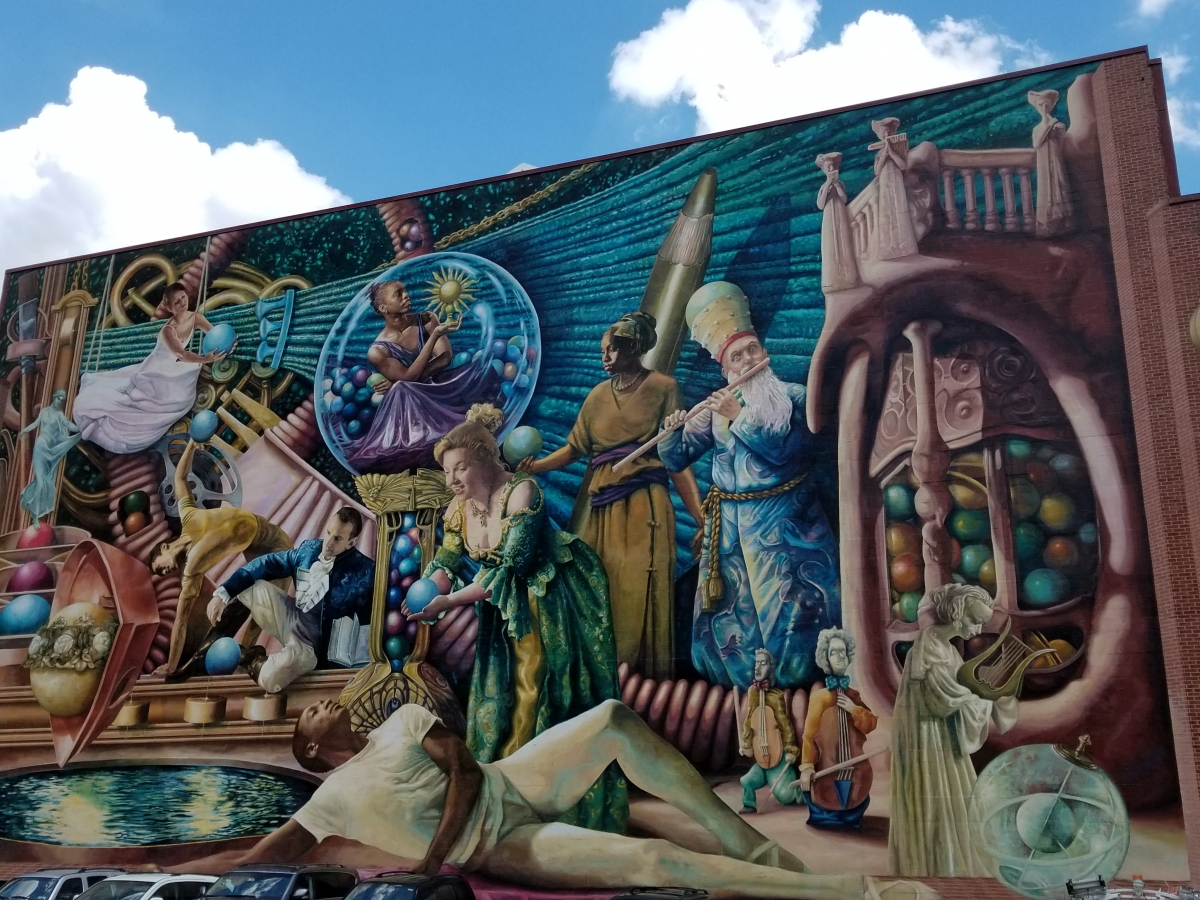
Dating back to World War II, the center of Philadelphia’s gay residential life, culture and commerce has centered around what is today known as the Gayborhood, which is located in the heart of Center City bounded by 11th Street (to the East), Broad Street (to the West), Pine Street (to the South) and Chestnut Street (to the North).
In 2007, Mayor John Street dedicated rainbow street signs around the Gayborhood. Since then, the rainbows have multiplied, adorning street signs (70+), homes, businesses and even a crosswalk at 13th and Locust streets.
The Gayborhood is a terrific location for all to experience great dining, shopping and nightlife. For additional “Top Picks for LGBT Philadelphia”, click here. Also, be sure to visit the Philadelphia Gayborhood Guru Blog for more information.
6) Gloria Casarez Mural (1972-2014)
204 S. 12th Street
Philadelphia, PA 19107

Gloria Casarez was the City of Philadelphia’s first Director of the Office LGBT affairs, and she was appointed to that role in 2008. During her tenure as Director of LGBT Affairs, the City of Philadelphia adopted the broadest LGBT rights protection in the nation and ranked as the number one city nationwide for LGBT equality. Prior to that, Casarez was the Executive Director of GALAEI (a queer Latin@ social justice organization) from 1999-2008, as well as a founding member of the Philly Dyke March and a long-time activist for marginalized communities. She married her long-time partner Tricia Dressel in 2011 in New York City. Casarez passed away on October 19, 2014, at the age of 42, from breast cancer.
7) Giovanni’s Room
345 S. 12th Street (12th & Pine Streets, Northeast Corner)
Philadelphia, PA 19107

Founded in 1973, the bookstore’s name comes from James Baldwin’s groundbreaking novel, “Giovanni’s Room”, that was published in 1956. The bookstore served as a refuge and cultural center at the onset of the modern lesbian, gay, bisexual, and transgender (LGBT) civil rights movement. The store relocated to its current location in 1979 on Pine Street. The store has provided resources to those working to gain legal rights for LGBT people. Today Giovanni’s Room is operated by Philly AIDS Thrift, a nonprofit secondhand shop located at 710 S. 5th Street.
8) AIDS Library
1233 Locust Street
Philadelphia, PA 19107

Founded in 1987, this community library was the nation’s first library to dedicate itself to the delivery of information on HIV treatments, nutrition and history of this disease. Today, the Critical Path Learning Center is an expansion of the AIDS Library and the Critical Path Project, and it serves as an educational commons and stigma-free space devoted to the intersection of health and literacy for the digital age. The Critical Path Learning Center is part of the Philadelphia FIGHT network of community health centers
9) John E. Fryer, M.D. aka Dr. Anonymous (1937-2003)
13th & Locust Streets (Historical Marker), Northeast corner
Philadelphia, PA 19107

In 1965, the University of Pennsylvania expelled Dr. Fryer from of his psychiatric residency program because of his homosexuality, which at that time was classified as a mental illness by the American Psychological Association (APA). Dr. Fryer completed his residency at Norristown State Hospital. In 1972, Temple University professor and psychiatrist Dr. Fryer, disguised as “Dr. H. Anonymous,” spoke out against the APA’s classification of homosexuality as a mental illness at the APA’s annual meeting. Dr. Fryer’s heartfelt and powerful testimony persuaded the APA to declassify homosexuality as a mental disorder in 1973, ending treatments such as chemical castration, electric shock therapy, and lobotomy and paving the way for advances in LGBT civil rights. The historical marker is located catty-corner from the Historical Society of Pennsylvania which houses the collection of Dr. Fryer’s work.
10) Barbara Gittings Way
13th & Locust Streets
Philadelphia, PA 19107
See “The Home of Barbara Gittings” (below) for more information on this pioneering woman. Barbara Gittings Way is in the heart of Philly’s own Gayborhood, and this recognition to the Mother of the LGBT Civil Rights Movement is due to the efforts of community leaders from many local LGBT organizations, including the Delaware Valley Legacy Fund, Equality PA, Independence Business Alliance, Mazzoni Center, Philadelphia Gay Men’s Chorus, Philadelphia Gay Tourism Caucus and the William Way Community Center.
11) William Way LGBT Community Center
1315 Spruce Street
Philadelphia, PA 19107
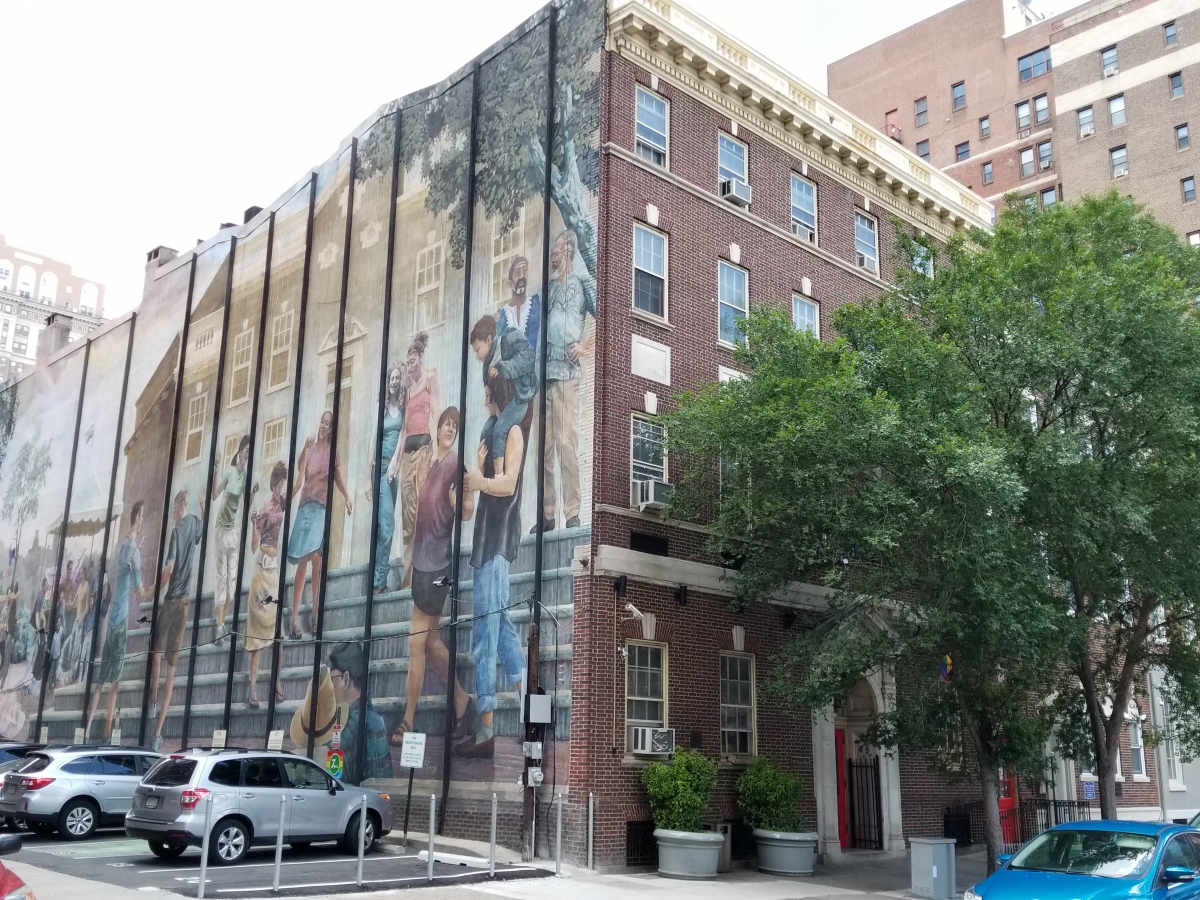
The William Way LGBT Community Center serves the LGBT community of Philadelphia and its allies 365 days a year. From social groups, networking events, and counseling and support services to art exhibitions and cultural experiences, the Center consistently strives to provide new and innovative programs for the LGBT communities of Philadelphia. On the exterior wall of the William Way Center, artist Ann Northrup’s mural “Pride & Progress” depicts portraits of LGBT Philadelphians through the years. The painting is 55’x165’ and includes a gay pride festival in the midst of nearby landmarks, including the Drake Hotel. The William Way LGBT Community Center started as the “Gay and Lesbian Community Center of Philadelphia” in 1974. The history of this Community Center can be found by clicking here.
12) City Hall
1401 John F. Kennedy Boulevard
Philadelphia, PA 19102

In the center of Philadelphia sits a testament to Philadelphia’s grand ambition and the tallest masonry building in the world. When William Penn first planned the street grid of Philadelphia in 1682, the land on which Philadelphia’s City Hall now stands was called Centre Square and was designed to be the center of Philadelphia, not just geographically, but of city government as well. In 1982, Philadelphia became one of the first cities in the country to pass an ordinance prohibiting discrimination based on sexual orientation. City Hall has also served as the site of many LGBT weddings dating back to May 20, 2014, when the Commonwealth of Pennsylvania enacted marriage equality.
13) Dewey's Lunch Counter Sit-In
17th Street (between St. James Street and Chancellor Street), now the location of the Hyatt Centric Hotel
Activists led one of the nation's first LGBT sit-ins here in 1965 after "a large number of homosexuals and persons wearing non-conformist clothing" were denied service at Dewey's restaurant. Inspired by African American lunch counter sit-ins, this event prompted Dewey's to stop its discriminatory policy. This represented an early victory along the journey to seeking LGBT rights.

The Pennsylvania historical marker was added in October 2018 to commemorate LGBT activists who, from May through June 1965, peacefully demonstrated against the then-popular diner's refusal to serve homosexuals and/or anyone who wore non-gender conforming attire. Dewey's became Little Pete's in the 1970s, and Little Pete's closed in May 2017 after being a go-to spot for almost 50 years in the Rittenhouse Square area. Today the site is the home of the new Hyatt Centric Hotel.
14) Rittenhouse Square
18th & Walnut Streets
Philadelphia, PA 19103
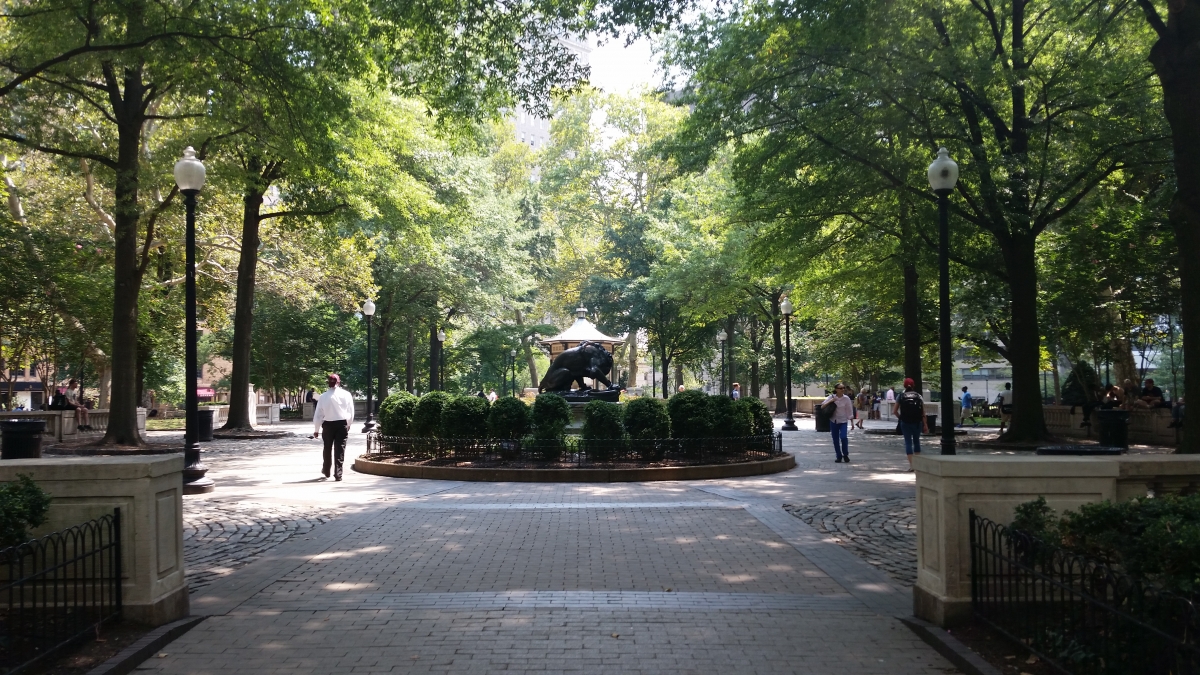
Rittenhouse Square is the epicenter to a vibrant neighborhood, and it is in close proximity to Philadelphia’s best restaurants, finest stores, top cultural attractions, main business district and world-class universities. According to the American Planning Association, “Rittenhouse Square has survived as a green oasis for more than 300 years because of the engaged citizenry that has pride in ‘Philadelphia's living room.’” In 1981, Rittenhouse Square was added to the National Register of Historic Places. Visit Philadelphia has referred to Rittenhouse Square as an “alfresco sanctuary for LGBT Philadelphians dating back to the 1930s.”
15) The Home of Barbara Gittings (1932-2007)
21st & Locust Streets
Philadelphia, PA 19103

Known as the Mother of the LGBT Civil Rights Movement, Gittings, who lived here, edited The Ladder, the first widespread lesbian magazine. She led initiatives to promote LGBT literature in libraries and to remove homosexuality’s classification as a mental illness. Gittings also co-organized the historic Annual Reminders at Independence Hall. In addition to the Historical Marker at 21st and Locust Streets, there is another Historical Marker at 13th & Locust Streets where Gittings shared a house with photojournalist partner Kay Lahusen, and that marker proclaims the thoroughfare as “Barbara Gittings Way”.
16) Keith Haring Memorial
22nd and Ellsworth Streets
Philadelphia, PA 19146

We the Youth is an original masterpiece mural by Pennsylvania-born Keith Haring (1958-1990) who was a preeminent pop-culture figure among the young artists, performers, and musicians whose work responded to urban street culture of the 1980s. This work is part of the Philadelphia Mural Arts Program, and it is one of many murals created by LGBT artists or about the LGBT movement.
Ready, Set, Explore & Learn
Guests taking The Constitutional Walking Tour of Philadelphia are in the perfect spot in the Historic District to start their own self-guided tour of LGBT History and Civil Rights Movement in Philadelphia: Meaningful Monuments, Murals and Markers. The Constitutional also offers private tours featuring LGBT history based on the sites and information described above.
For tickets and information on The Constitutional, or to schedule a private tour about LGBT history, please click on the Buy Tickets button, call 215.525.1776 or email info@TheConstitutional.com .
Enjoy your tour!
